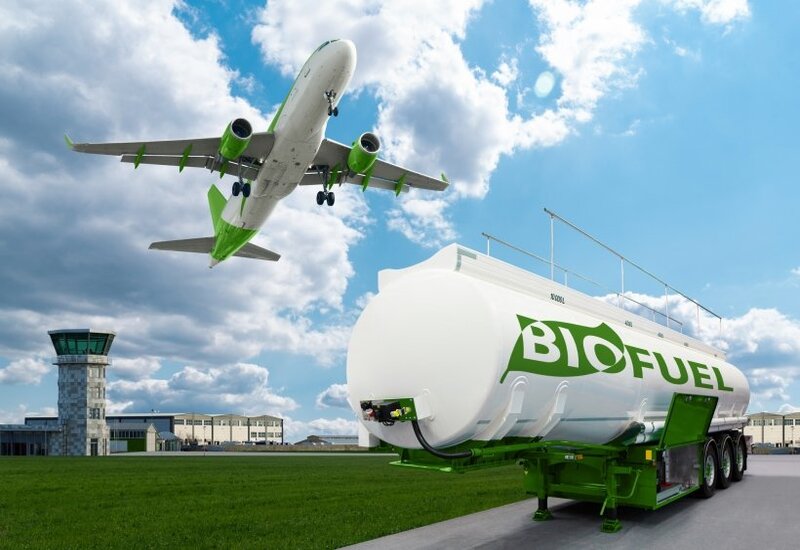
Introduction:
The aviation industry plays a significant role in global transportation, connecting people and goods around the world. However, the environmental impact of aviation, particularly greenhouse gas emissions, has become a growing concern. In response to this challenge, the development and utilization of Sustainable Aviation Fuel (SAF) have gained momentum. In this article, we will explore the concept of SAF, its benefits, challenges, and its potential to transform the aviation industry into a more sustainable and environmentally friendly sector.
- What is Sustainable Aviation Fuel?
Sustainable Aviation Fuel, also known as biojet fuel or drop-in fuel, is an alternative to conventional jet fuel derived from fossil fuels. SAF is produced using renewable feedstocks, such as waste oils, agricultural residues, algae, or dedicated energy crops. It has similar properties to conventional jet fuel, allowing it to be used as a drop-in replacement in existing aircraft engines without the need for modifications or infrastructure changes.
- Environmental Benefits of SAF:
The use of Sustainable Aviation Fuel offers several environmental benefits compared to traditional jet fuel:
a) Reduction of Greenhouse Gas Emissions: SAF has the potential to significantly reduce greenhouse gas emissions from aviation. It has a lower carbon footprint compared to fossil-based jet fuel, with some SAF variants even achieving net-zero or negative emissions when produced from certain feedstocks.
b) Improved Air Quality: SAF has lower levels of sulfur and particulate matter emissions compared to conventional jet fuel. This leads to improved air quality around airports and reduced health risks for local communities.
c) Renewable Energy Source: SAF is derived from renewable feedstocks, reducing reliance on finite fossil fuel resources and promoting the use of sustainable energy sources.
- Technological Readiness and Compatibility:
One of the key advantages of SAF is its compatibility with existing aircraft and infrastructure. It can be used in existing aircraft engines without the need for costly modifications or the construction of new refueling infrastructure. This compatibility allows for a seamless transition to SAF, making it a viable and practical solution for reducing emissions in the aviation sector.
- Challenges and Limitations:
While SAF holds immense potential, several challenges hinder its widespread adoption:
a) Feedstock Availability: The availability of sustainable feedstocks in sufficient quantities is a critical factor for scaling up SAF production. Ensuring a diverse and sustainable feedstock supply chain is necessary to avoid potential negative impacts on food production, land use, and ecosystems.
b) Production Costs: Currently, the production costs of SAF are higher compared to conventional jet fuel due to limited economies of scale and the high cost of feedstocks. However, as technology advances and production volumes increase, it is expected that the cost of SAF will become more competitive.
c) Regulatory Frameworks: Developing supportive regulatory frameworks and policies that incentivize the production and use of SAF is crucial. Governments, industry stakeholders, and international organizations need to collaborate to establish clear and consistent standards, certification processes, and market mechanisms to accelerate the adoption of SAF.
- Collaborative Efforts and Initiatives:
The aviation industry, along with various stakeholders, is actively working to promote the production and use of SAF:
a) Airlines: Many airlines have committed to increasing their use of SAF and have started integrating it into their operations. This includes both full-scale commercial flights and test programs to evaluate SAF performance and feasibility.
b) Fuel Producers: Petroleum companies and biofuel producers are investing in research and development to improve SAF production processes and increase production capacity. Collaboration between fuel producers, feedstock suppliers, and technology developers is essential for sustainable and scalable SAF production.
c) Government Support: Governments around the world are implementing policies and incentives to support SAF production and consumption. These include financial incentives, research grants, and regulatory measures to promote SAF adoption.
d) International Collaboration: Organizations such as the International Civil Aviation Organization (ICAO) and the Air Transport Action Group (ATAG) are working to establish global standards and guidelines for SAF production, sustainability criteria, and carbon offset mechanisms.
Conclusion:
Sustainable Aviation Fuel represents a promising solution to mitigate the environmental impact of the aviation industry. By significantly reducing greenhouse gas emissions and promoting the use of renewable energy sources, SAF has the potential to transform the aviation sector into a more sustainable and climate-friendly industry. However, addressing challenges such as feedstock availability, production costs, and supportive regulatory frameworks is crucial to accelerating the widespread adoption of SAF. Through collaborative efforts among airlines, fuel producers, governments, and international organizations, the aviation industry can take significant strides towards achieving a more sustainable future in the skies.




